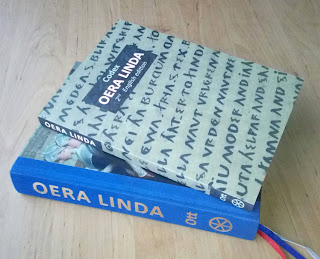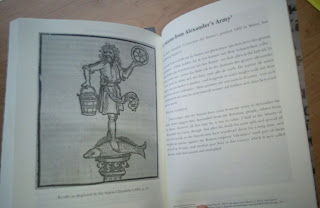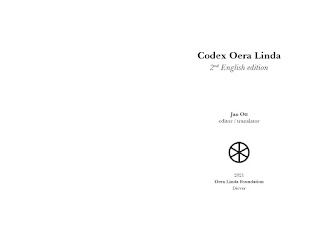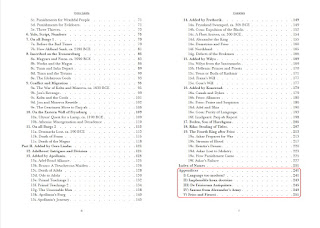
|
|
Berruguete, late 15th century (crop)
|
Our understanding of what happened more than seven hundred years ago
is based on little evidence. Much of it is assumption and
interpretation, in line with traditions of scholarship. For ages,
religious institutions decided what manuscripts were worth and
permissible to be saved and made public. There will still be
treasures hidden in private collections or forgotten archives. One
and a half century back, this will have been more true than today.
In
1867, a manuscript surfaced in the Netherlands. It seemed to be a
13th century copy of an older original, in unusual lettering and
containing laws and histories from an era before our year zero. Its
contents puzzled the few who got to see it. Was this too good to be
true? Or would it have been recognized as a potential threat to the
then monarchist-protestant state?
Five
years later, the first translation was published as "Thet Oera
Linda bok", named after the Oera Linda clan that seemed to have
initiated the manuscript and preserved it through the ages. Even before
publication, the verdict had already been pronounced in newspapers
and magazines: it had to be fake and anyone who thought otherwise was
a fool. In 1876, the first and only 'evidence' against authenticity
was presented: it could not be authentic, because its language would
be 'gibberish'. However, some of the most prominent Old Frisian
specialists judged very differently.
In 1938, the controversial manuscript was donated to the Frisian
provincial library by the then owner, Cornelis Over de Linden IV
(1883-1958), who trusted that his donation would finally lead to
proper study of the document and its contents. Until today, this
never happened. The library states that it is “commonly
believed to be a forgery”,(*) but substantiation of this belief is
hard to find. The main ‘evidence’ seems to be the fact that
scholars do not take it seriously... Asking the question if the
manuscript or its contents could be authentic after all seems to have
been taboo in Dutch academia since the late 1870s.
On December 14, 2020, the Oera Linda Foundation was registered, with
the purpose to promote research on, translations of, and publications
about the manuscript (or codex) known as the Oera Linda-book. The
document begins with a letter of instruction, dated 1255 AD by the
last known copyist of the writings, Hidde Oera Linda, who briefed his
son Okke to also make a copy “so that they will never be lost”.
The foundation's first publication, 'Codex Oera Linda', is intended
to be the modern version of such a new copy. It contains a new
transliteration and an English translation of the original texts,
with an index of proper names and a suggested alternative reading order. It can finally replace the only English edition thus far from
1876 by William Sandbach, which was a translation of the first (1872)
Dutch translation by Dr. Jan Ottema and which included a mutilated,
so-called facsimile print of the pages with the wheel-based letters
and numbers.
In our times, ever more people learn to make up their own minds about
issues relevant to them. For those interested in our deepest roots,
the origin of our language and consciousness — in particular our
innate desire for freedom, truth and justice — Codex Oera Linda may
provide a wealth of inspiration.
(* Dutch: "Binnen enkele jaren was de algemene opvatting dat het om een vervalsing ging" http://oeralindaboek.nl/; click on "over het Oeralindaboek")




















































